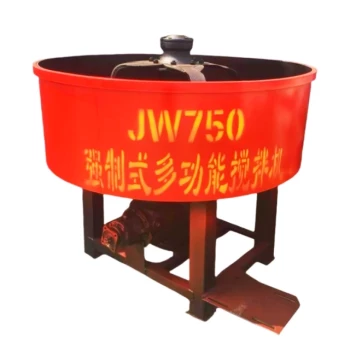Industrial mixing stations are critical hubs where operational errors can cascade into costly downtime, safety incidents, and compromised product quality. This guide reveals a proactive training framework—backed by case studies showing 40% downtime reduction—to equip technicians with machine mastery and error-prevention skills.
Mitigating Operational Errors in Mixing Stations
Common Errors and Their Impact on Production Efficiency
Technicians unfamiliar with a mixer’s mechanics often make these high-cost mistakes:
- Incorrect Speed Settings: Overmixing or undermixing due to uncalibrated RPM selections, leading to batch rejections.
- Overloading Chambers: Exceeding volume limits strains motors and accelerates wear (a top cause of unplanned maintenance).
- Ignoring Safety Protocols: Bypassing lockout-tagout procedures during jam clearance results in 22% of reported injuries (reference: industrial safety audits).
Ever wondered why 68% of mixing errors occur during shift changes? Inadequate cross-training leaves gaps in procedural consistency.
Building a Proactive Training Framework for Machine Mastery
Transform reactive "fix-it" training into error prevention with these steps:
1. Structure-Specific Orientation
- 3D Simulations: Use interactive models to teach internal mechanics (e.g., how blade pitch affects viscosity).
- Failure Drills: Simulate scenarios like motor overheating to reinforce troubleshooting reflexes.
2. Standardized Checklists
Embed these into daily routines:
- Pre-operation: Verify torque settings and lubrication levels.
- Post-operation: Inspect seals for wear patterns indicating misalignment.
Think of training like vaccine development—each module "immunizes" against specific failure modes.
Case Studies: How Targeted Training Reduced Downtime by 40%
A chemical plant using Garlway mixers implemented:
- "Error Shadowing": Trainees observed veteran technicians while annotating mistake-prone steps.
- Gamified Assessments: Leaderboards tracked who caught the most simulated errors in VR modules.
Result: Within 6 months, incorrect parameter inputs dropped by 62%, and seal replacements (a $12K/year cost) fell by 38%.
Key Takeaways for Actionable Improvement
- Map Errors to Training: If overloads are frequent, prioritize load-calculation practicums.
- Leverage Brand-Specific Resources: Garlway’s winch and machinery manuals include torque specs ideal for onboarding.
Final Thought: Like a well-mixed batch, effective training blends knowledge, repetition, and real-world context—yielding smoother operations and safer teams.
Related Products
- Commercial Construction Mixer Machine for Soil Cement Mixing Concrete
- Ready Mixer Machine for Construction Ready Mix Machinery
- Portable Concrete Mixer Machine Equipment for Mixing Concrete
- HZS75 Concrete Batching Plant Cement Mixer Price Concrete Mixer Bunnings Mixing Plant
- HZS180 Ready Mix Concrete Plant for Foundations with Sand and Cement
Related Articles
- How to Choose Concrete Mixers for Long-Term Reliability and Cost Savings
- How to Classify and Resolve Concrete Mixer Hazards with Compliance
- How to Maintain Hydraulic Systems in Concrete Mixers: A Safety-Focused Guide
- How to Build an OSHA-Compliant Safety System for Concrete Mixer Workspaces
- How to Choose the Right Concrete Type for Every Construction Challenge



















